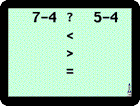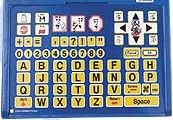
More Than/Less Than teaches the relationship between numbers, starting with greater and less and progressing to include equal. The teacher can select numbers ranging from 1 to 5 up to 1 to 19. The default values are 1 to 9.
On the lower levels, a number of objects are drawn inside two boxes. The student determines the relationship between the two sets by either counting the objects or comparing the size of the boxes and pressing the ">" or "<" key. As the program progresses, the boxes are taken away so that the student must count the objects. Numbers are introduced on the screen to coincide with the number of objects.
The middle levels increase the use of numbers and decrease the use of objects to count. As the level of difficulty increases, some "equals" problems are introduced.
On the higher levels, pairs of numbers to add and eventually pairs of numbers to subtract are presented as equations for the student to solve.
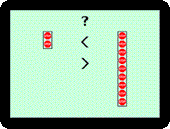
Level 1
The objects on the screen are placed in straight lines inside boxes. The differences between the two numbers is always at least 50% to provide an easy comparison.
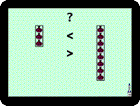
The differences are reduced to 1 or more.
Level 3
The objects are not always arranged in straight lines.
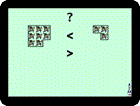
The boxes are taken away and numbers are introduced as reinforcement after an answer. The differences are at least 50% and the objects are again arranged in straight lines.
Level 5
The differences are reduced to 1 or more.
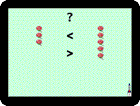
The objects are not always arranged in straight lines.
Level 7
Numbers are presented on the screen so the student does not have to count before solving the problem.
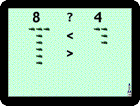
"Equal" problems are now included.
Level 9
No objects are presented for the student to count.
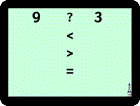
The two sides of the equation are broken down into addition problems, with either the first or the second number the same on both sides of the equation.
Level 11
One of the numbers on each side of the equation is always the same.
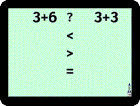
The numbers are completely random.
Level 13
Subtraction problems are used with one number always the same on both sides of the equation.
Level 14
The numbers are completely random.
